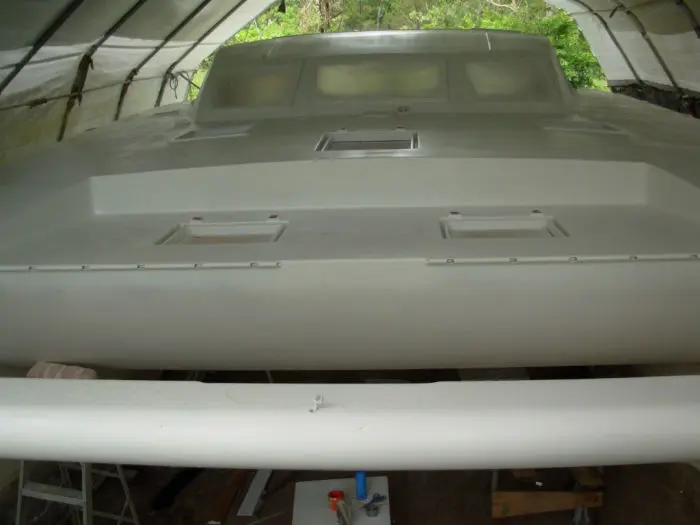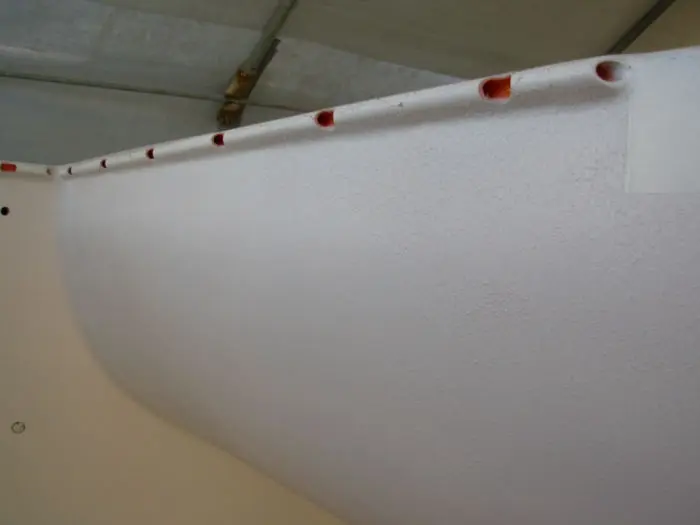Fairing and two-pack undercoat painting
In our case, the last of the external fairing was tackled. A little more effort in prior preparation, paid dividends down the line with the finish.
It was at this late stage that an indentation was found down one side and it was back to filling and fairing all over again. With the kind assistance of a few friends namely Andy (may he rest in peace) and John, this was completed to perfection.
In our case, the last of the external fairing was tackled. A little more effort in prior preparation, paid dividends down the line with the finish.
It was at this late stage that an indentation was found down one side and it was back to filling and fairing all over again. With the kind assistance of a few friends namely Andy (may he rest in peace) and John, this was completed to perfection.
Added to this was our late decision to add plinths to the whole yacht. They all had to be made, glassed and faired. This did add another two weeks of part-time boatbuilding. From here it was smooth sailing, the rest of the undercoat was sprayed on in two thick coats. The following day, this was very lightly sanded, ready for the topcoat.
The undercoat of the yacht finally shows its true colour (so to speak).
It's here that the painting learning curve starts. The small things that you once paid no attention to like daily temperature, humidity and measuring to the gram, finally hit home. These three things are so important in doing the job once and correctly.
The frustration of runs, spray nozzle blocking are so easily overcome with some self-training on possibly the inside of the hulls, till you get confident with your own painting practices.
Spray nozzles, spray-guns, respirators and compressors are supplied in more detail in our Books.
Choosing the correct Inline Airflow Respirators and spray equipment saves your health and definitely minimises the spray painting time. The 'Two-Pack Paint Warning' and 'Dont kid yourself about Two Pack Carcinogens' articles will be information well worth consideration.















